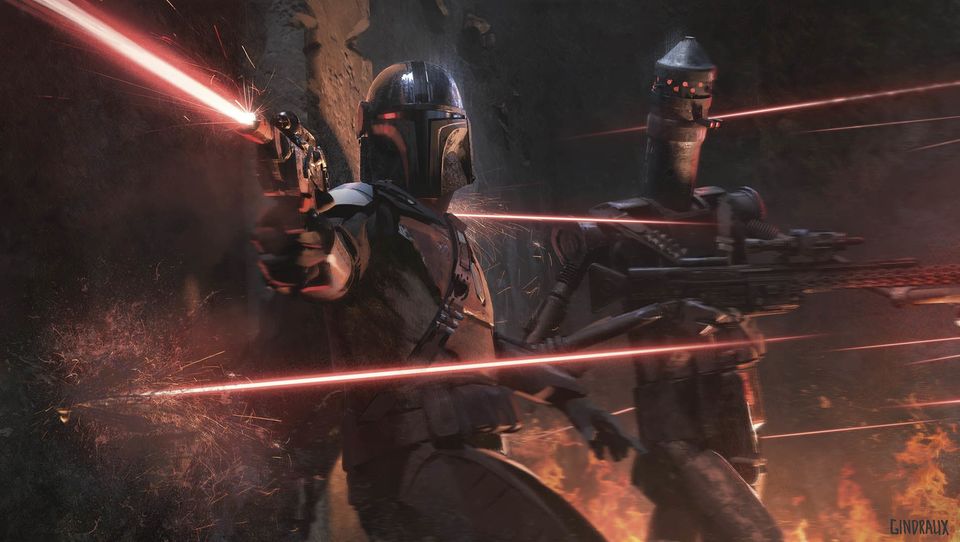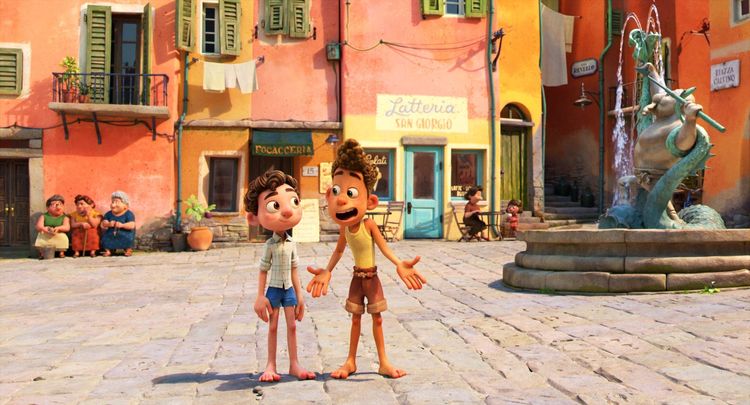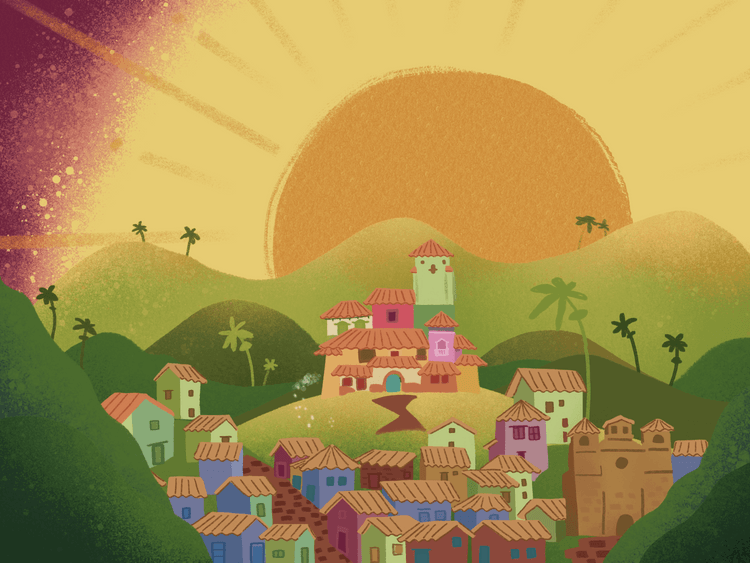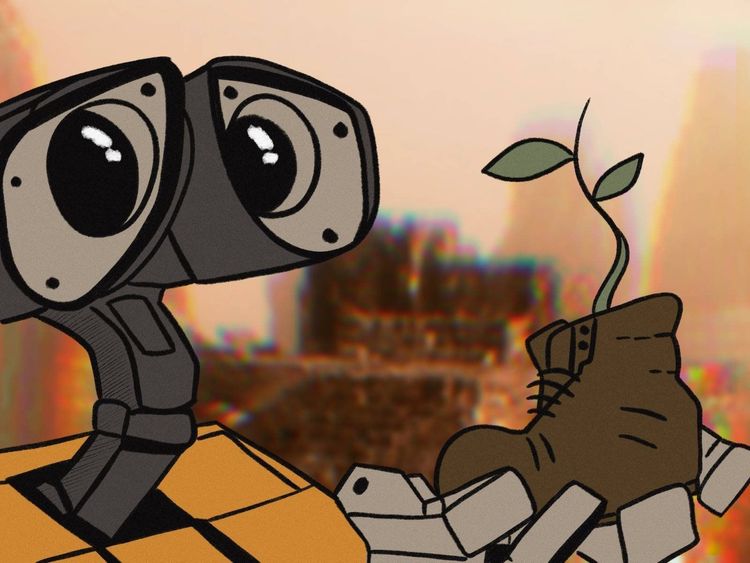Masks & The Mandalorian

Heroes, villains, and our masked moment
Cover image: Concept art from The Mandalorian
During the pandemic, I’ve been one of many watching Disney’s The Mandalorian. If you’re a nerd like me, you know that sci-fi is a speculative genre: This fiction imagines a high-tech universe whose galactic scope entertains, yes, but also (strangely) illuminates our earthbound experience. Notoriously, The Mandalorian’s hero never removes his helmet. One might even say that he is continually masked. My curiosity was, naturally, piqued. I returned to the original Star Wars series, asking what the use of masks in these films’ might reveal for the current us. As it turns out, the masks of the stormtroopers, Darth Vader, and the Mandalorian—both heroes and villains—play a crucial role in categorizing the human and the inhuman, and further, in revealing our very human vulnerabilities.
The stormtrooper’s helmet is iconic. Though this piece of armour is meant to shield, the Empire soldiers weaponize their masks. They wield them as symbols of the frightening face of evil. When a stormtrooper helmet appears on screen, we shiver. The white curves, black sockets and mouth slits—its design is a twisted, corrupted version of the human face. Perhaps the quintessential enemy costume, the stormtrooper mask defines how we perceive the humanness of the wearers: The bad guys are human enough to be scary, but not so much that we might empathize with them. Even their voices are distorted, masked, rendering the enemy reassuringly inhuman. Further, the erasure of the Imperial soldiers’ humanity happens en masse, and their authoritarian uniformity sends a Cold War-tinged shiver up our spines. As the rows upon rows of white and black unfold on screen, no human face in sight, the stormtroopers marshal in the reign of the Empire and march straight into our enemy category.
On the other hand, we have Darth Vader. For much of the trilogy, his helmet (like the stormtroopers) masks his humanness and instills fear. But this villain doesn’t stay villainous, and the symbolic power of the Sith Lord’s redemption scene at the end of The Return of the Jedi rests in his mask. After killing Emperor Palpatine in order to save his son, Darth Vader is fatally electrocuted and faces death. I don’t think anyone could forget what follows. Luke removes his father’s helmet: Before us, we see a pale, gasping, scarred man. The invulnerable antagonist is made vulnerable—and human. Ironically, Darth Vader’s helmet expresses this same vulnerability. An inhuman mask, as it enables him to continue to breathe, has perpetuated his human life. What was once a symbol of power, control, and fear, is now a reminder of this man’s powerlessness, his lack of control, and his fearfulness of death.
In an ironic twist to the original Star Wars series, The Mandalorian’s villain has a face, and the hero is masked. Following the Way of the Mandalore, the protagonist adheres to a religious creed that prohibits him from removing his helmet in front of another human, representative of his belonging to something greater than himself. His mask carries religious overtones of obedience, submission, even modesty, but most of all, it sets him apart. The shiny armour attracts friends and enemies alike. It makes him a vulnerable target. In this Star Wars universe, choosing to wear a mask is a political choice. But politics aside, watching a masked protagonist is, well, weird. Or at least it should be, because the audience doesn’t have a visible, human face to empathize with. I wonder if the strangeness is mitigated by our current context, where being masked is the norm—and maybe even heroic.
Face coverings—enforced or not—are undoubtedly the face (pun intended) of COVID-19. We look to our masks, whether clinical blue or home-sewn, to shield us from contagion. But can they provide us with more than that? As we face this global pandemic, can we truly find hope or courage in a piece of cloth?
Star Wars points out the significance of mask-wearing—it is a choice that can reveal our political stance or our values. The stormtroopers, in particular, remind us that covering our faces comes with a cost. Masks may grant us a sense of control over our bodily health, but if we wear them to become invulnerable, we are wearing them as the stormtroopers did, as icons of power. When we place our hope in a technology that blurs our humanness, we can’t mourn the loss of connecting with our friends unmasked. We risk forgetting that we wear masks so that one day, we don’t have to.
Darth Vader’s mask-lessness is also not his ultimate cause for hope but points instead to deeper powers: redemption, remembrance of his mortality, and reconciliation with Luke, his son. The Mandalorian’s helmet is another powerful icon, but the creed it symbolizes, his faith in its tenets, and the reputation it lends him as someone whose help you can trust—these are what make him a hero, not his mask. Ironically, the masks of both characters reveal how human relationships are a stronger force for good than the Empire’s legions. We cover our faces for our protection and for the protection of others, but our hope moving forward must be in something deeper.
Masks are instruments for a time we hope is brief. We wear them to obey government rules, relinquishing our freedom for the sake of our vulnerable populations. Masks also acknowledge this strange fact that our bodies can be weapons—enemy agents carrying disease. Every time I feel my breath against the cloth, I am reminded that we are all victims of COVID-19's hijacking. None of us can escape the touch of sickness, suffering, and death. Though I do not see your face, I see a blue fabric reminder of someone vulnerable, just like me.





Member discussion